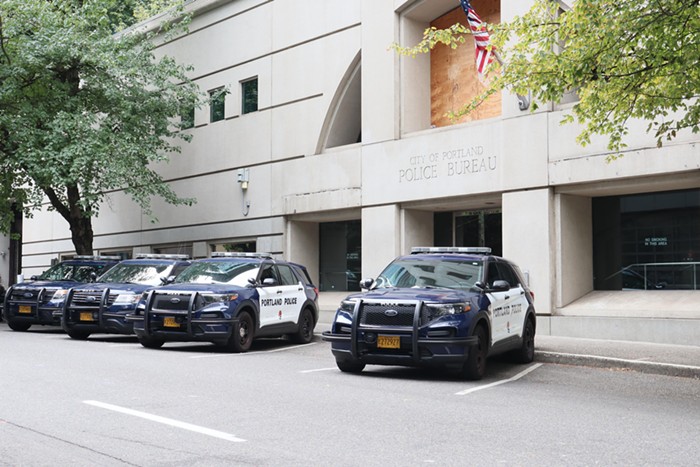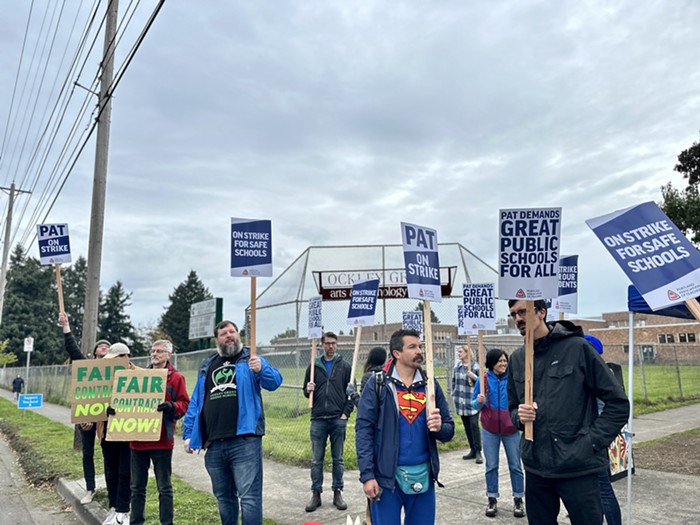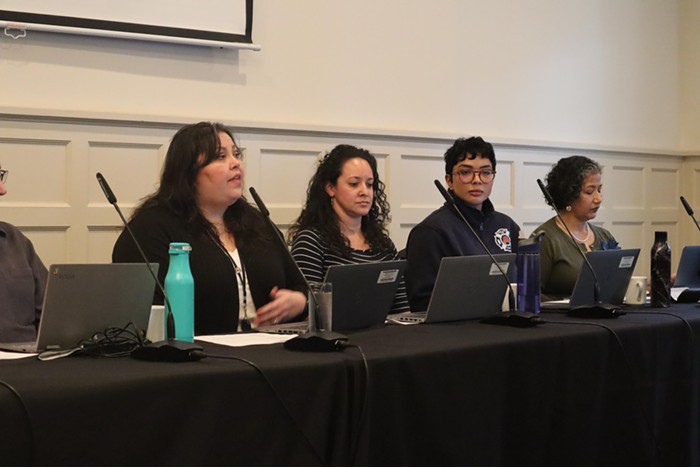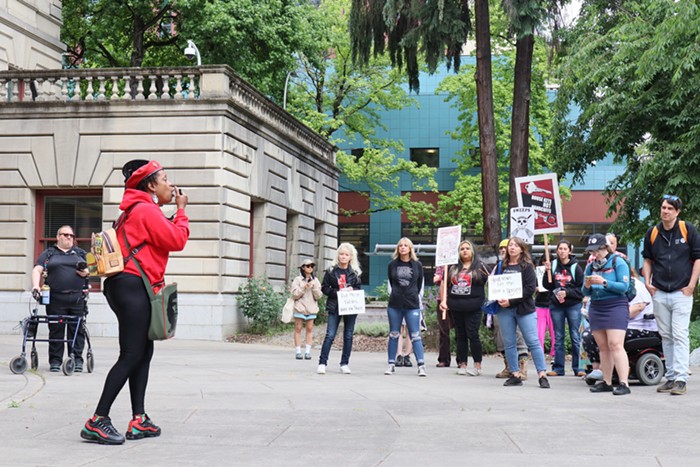WHEN STUDENTS descend on Oregon's seven state universities for fall classes on September 30, a sizable chunk of the staff might be there to greet them with picket lines.
For the second time in as many contracts, a union that represents roughly 4,500 university workers has called for a strike. The Service Employees International Union (SEIU) Local 503 says its workers have already shouldered too much of the burden for public higher education, and that university bigwigs are enjoying obscene pay bumps while many low-level employees suffer through furloughs and food stamps.
"We were perfectly willing to share the burden and do our part," says Marc Nisenfeld, a Portland State University development engineer who chairs the union's bargaining team. "The administration didn't share the sacrifice."
Now, union negotiators are fighting attempts to slash yearly 4.75 percent "step raises," and arguing for robust cost-of-living increases.
They accuse the Oregon University System of launching an unprecedented attack on the two-year contract, demanding to go over each of the document's 66 sections when in past years only a portion were hashed over.
Union officials blame the hard-line tactics on the university system's new chief negotiator, Brian Caufield.
"We spent a couple decades building a relationship and he set us back a couple decades," Nisenfeld says.
The university system, meanwhile, says it's doing its best to make do with shrinking state support.
And higher-ed officials have some convincing reasons to gripe. The portion of the state's general fund being kicked to public higher education reached a record low of 4.8 percent—about $668.3 million—in the 2011-2013 budget. At the same time, the system's serving more students than ever. Enrollment has swelled by around 30,000 per year since 2000.
Much of the costs have been shunted onto students, whose tuition has more than doubled since the 2001-2002 school year. But university staff have also taken hits in the form of pay freezes and furlough days.
"We've done a remarkable job of trying to hold costs down and continuing to provide an exceptional education to all our students," says Melody Rose, interim chancellor of the university system.
The SEIU has some legitimate complaints of its own. University presidents, who each year pull in anywhere from $195,000 to more than $440,000 in taxpayer dollars (some get additional money from private university foundations), saw pay increases last year while union workers' cost-of-living adjustments were rendered moot by furloughs.
According to news reports, Portland State University President Wim Wiewel received a $15,000 salary increase last year. "That's not much less than what some of our members make," Nisenfeld says. Wiewel and other presidents, it should be said, accepted years of salary freezes before the pay bump.
The union's 4,500 university members work throughout the campuses—from office jobs to public safety to the AV department. The union last walked off the job in 1995, but called strikes in 2001 and 2011 before pulling back. It's been hashing out a contract with university officials since February, and will continue to talk with them while workers gear up to strike on September 30, Nisenfeld says.
As you'd expect, there are big cost differences between the SEIU's proposal and the university system's. The union's demands would cost more than $5.7 million extra a year.
The SEIU also argues the university system is top-heavy. According to figures released last year, there are roughly two faculty members and union workers for every administrative staff member. That number should be closer to 11 to one, the union says, citing a standard applied across other state agencies.
But the university system says its administrative costs are comparable—and often lower—than its peers, and has no intention of discussing the matter in contract talks. It's also expressed concerns about proposals setting a "wage floor" of $2,498 a month for union employees. Such a move, it says, "May result in loss of other valuable assistance, such as food stamp eligibility, or housing and child care subsidies."
At least university officials want to be sure employees get their food stamps.



















